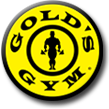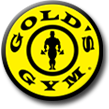Beginner Yoga Basics
We interviewed four certified yoga instructors to show you how to get started at this tried and true practice that benefits your body and mind. The best part? Every class ends with a nap.
When yoga mats first rolled out on U.S. floors, many thought the practice was reserved for pony-tailed hippies and New Age commune dwellers. Now this ancient practice has svelte celebrities flocking to ashrams and medical researchers studying the positive effects of meditation. The votes are in: Yoga is a yes.
So if you think “down dog” is merely a puppy-training command or feel mystified by the term “chaturanga”—it might be time to look into yoga. To help you out, we did reconnaissance and spoke to four certified yoga teachers to dispel a few of the most common newbie fears and give you solid tips for how to get started as a beginner.
To start, let’s dispel a couple of the most common fears of beginning yoga students.
YOU DON’T NEED TO BE A CONTORTIONIST. “Sure, flexibility is a plus, but it isn’t necessary,” explains Elsie Escobar, whose students include 60-year-olds with arthritis. If you can’t touch your toes, there are tools to assist you. Sitting on a block can help you keep your back straight during seated poses, and using a strap or towel when you stretch your arms or reach for your toes can ease you in to deeper stretches.
YOU WILL NOT LOOK SILLY. Remember that your classmates were once young yogis too. “Every single person in the room, including the teacher, had to overcome their fear and step on a mat,” says Stacy Shepherd, a Gold’s Gym yoga instructor. Plus, there isn’t a peanut gallery there to judge you. “In yoga, we help hold each other up with our practice; there is no competition.”
Next, here are a few tips for those just dipping their toes into asanas:
START AT THE BEGINNER LEVEL. Even if you can run a marathon and rock a Zumba class, a yoga newbie should try out a beginner class first. “People who are very physically fit will go to intermediate and advanced classes because they think yoga looks easy,” says Jennifer Rodrigue, senior associate editor at Yoga Journal. “But that is a surefire way to open yourself up to potential injury.” Beginner classes also help you learn technique, because basic points like where to place your feet, point your hips and hold your arms will be stressed more than they will in intermediate or advanced sessions.
TEACHER, TEACHER. “If you have questions, ask!” Escobar says. You might feel strange interrupting class, but most teachers don’t mind. “If we can’t help right then, we’ll let you know and we can figure it out together later.” (Shy beginners can always approach the teacher after class.) And just as with any fitness class, look for a teacher you like and respect. “Make sure it’s a person you don’t mind listening to for 90 minutes and someone who is experienced and you can trust,” Rodrigue advises. If you have any injuries or medical conditions, be sure to approach the instructor before class and fill him or her in on your health concerns.
KNOW THE SAFETY POSE. If you’re ever experiencing pain or need a break, take child’s pose. “It’s the time-out pose,” Escobar explains. Place your knees on the mat, then lower your chest on top of your legs and drop your head. You can then stretch your hands out in front of you or drop your arms to your sides.
FIND YOUR STYLE. “It’s a good idea to take several different styles of yoga to see what you like best,” says Samantha Martin, a Dallas-based yoga instructor. “Then try a few different teachers before making a judgment.” To get a full experience, try attending two classes per week for a month. “When you go to a new grocery store, it’s hard to find anything, even milk, but as you go more often, you remember where the dairy aisle is and you can get to it faster. Then you begin to relax and discover other parts of the store—that’s what yoga feels like at first,” Escobar says. “You’re moving in new ways and using parts of your body that you haven’t before, so the more often you go, the better you can navigate.” But don’t be afraid to say that yoga is not for you—as Rodrigue explains, “it’s important that you enjoy the process. Yoga is just one method. If you try it and don’t feel it’s for you, don’t force yourself to keep practicing.”
Last, but not least, here are the great reasons to add yoga to your fitness routine:
IT CLEARS THE MENTAL CHATTER. In this Internet and smartphone era, our brains are constantly multitasking and overthinking. “When you practice yoga, you put yourself in positions that make you be actively conscious and force you to slow down,” Escobar says. “You have to focus on breathing, think about where your hands need to go, where your knees should be.” Once you’ve learned how to be present, you can translate that into other parts of your life. As Shepherd explains: “You learn to focus on your breath coming in and out, so next time you’re in a meeting or listening to a friend, you can keep focused.”
IT’S LIKE GIVING YOURSELF A BREAK. Above all the other benefits that our practitioners hear about and see, the raves about how relaxed their students feel after class have made the biggest impression. “They often leave saying that they feel like they just went to a spa,” Martin says. “Students are so focused on what they’re doing that all of the outside distractions can finally float away.”
NAP TIME! If you’ve never heard of savasana—then your life just got better. This is the Sanskrit title for the typically five-minute rest that happens at the end of each class. The lights are lowered and you lie on your back with your palms up and eyes closed to let your body absorb the class. “Yoga is the one form of exercise where each class includes time to lie down and rest at the end,” Martin says. “I once heard someone say that nothing in class matters as long as you have a great savasana.”
A BETTER BODY AND MIND. We’ll let Shepherd handle this one on her own. “People are typically attracted because of the physical aspects—like they heard it would help their core—and I see people achieve great results: sculpted muscles, a reduction of body fat, increased stamina and, of course, more flexibility. But the people that become regular lifetime practitioners stay committed because of the results they didn’t expect: increased self-confidence, a more authentic way of being, reduced heart rate, a reduction of stress in their lives and healthier eating habits.”
First published in www.goldsgym.com. Edited and translated by Gold's Gym Indonesia.
Gold's Gym Mall Ciputra | Gold's Gym Mall of Indonesia | Gold's Gym Thamrin City | Gold's Gym Cilandak Town Square | Gold's Gym Baywalk Mall Pluit | Gold's Gym Kalibata City Mall | Gold's Gym Braga Citywalk | Gold's Gym Cihampelas Walk | Gold's Gym Summarecon Mall Serpong | Gold's Gym Mall @ Alam Sutera | Gold's Gym Bintaro X-change | Gold's Gym The Breeze BSD | Gold's Gym Grand City Surabaya | Gold's Gym Surabaya Town Square | Gold's Gym Grand Metropolitan Bekasi





